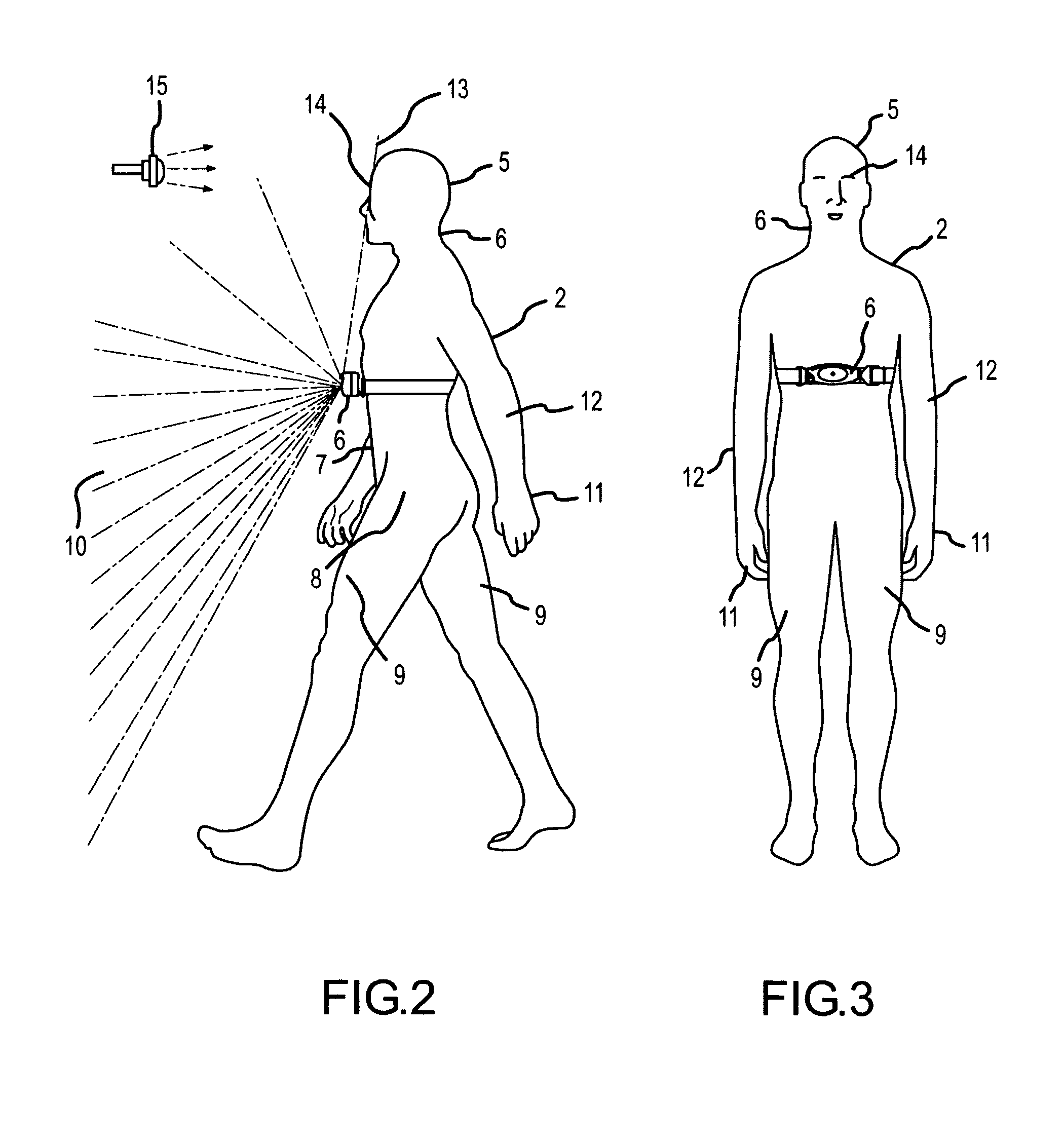Chest height light emission system
a light emission system and chest height technology, applied in the field of chest height light emission system, can solve the problems of inability to wear a device by a person, inability to provide illumination for activities to increase visibility, and inability to achieve the effect of reducing the stress on the head and neck muscles, avoiding temporary blindness, and reducing the reduction of visual acuity
- Summary
- Abstract
- Description
- Claims
- Application Information
AI Technical Summary
Benefits of technology
Problems solved by technology
Method used
Image
Examples
Embodiment Construction
[0033]A preferred embodiment of the inventive illumination device can be worn at chest height to illuminate the area proximate to the wearer. Now referring primarily to FIG. 1, the illumination device (1) can be worn by a person (2) (or wearer) to illuminate a path (3) in the direction of travel. As to this preferred embodiment of the invention the illumination invention (1) can be established at chest height (4)(as described below) by adjusting a restraint (5) connected to an illumination assembly (6). The term “chest height” generically encompasses the tubular region of a person between about the level of the armpits and about the level of naval (above the waist). The term is not intended to be limiting with respect to the location at which the illumination assembly can be established on the tubular region of the wearer and the illumination assembly can be established on the front side, the back side, or at any other desired location on the tubular region each being a chest height...
PUM
 Login to View More
Login to View More Abstract
Description
Claims
Application Information
 Login to View More
Login to View More - R&D
- Intellectual Property
- Life Sciences
- Materials
- Tech Scout
- Unparalleled Data Quality
- Higher Quality Content
- 60% Fewer Hallucinations
Browse by: Latest US Patents, China's latest patents, Technical Efficacy Thesaurus, Application Domain, Technology Topic, Popular Technical Reports.
© 2025 PatSnap. All rights reserved.Legal|Privacy policy|Modern Slavery Act Transparency Statement|Sitemap|About US| Contact US: help@patsnap.com



